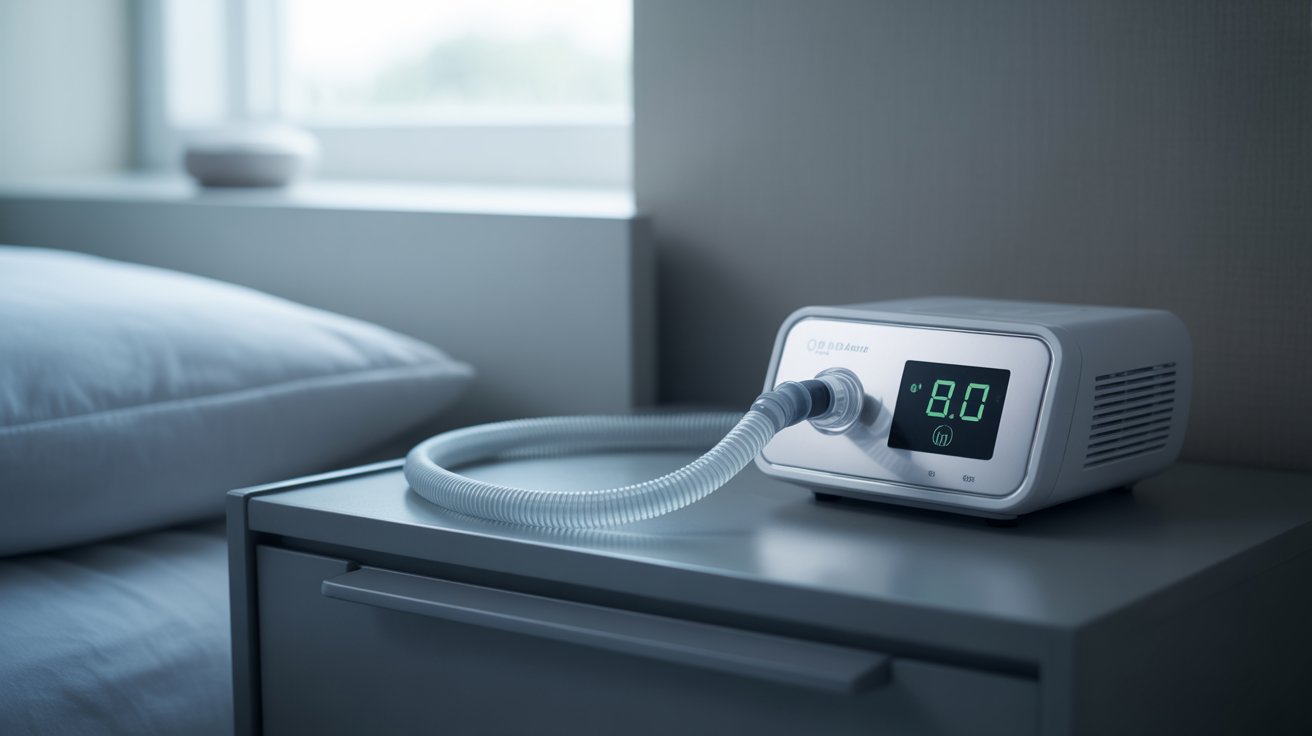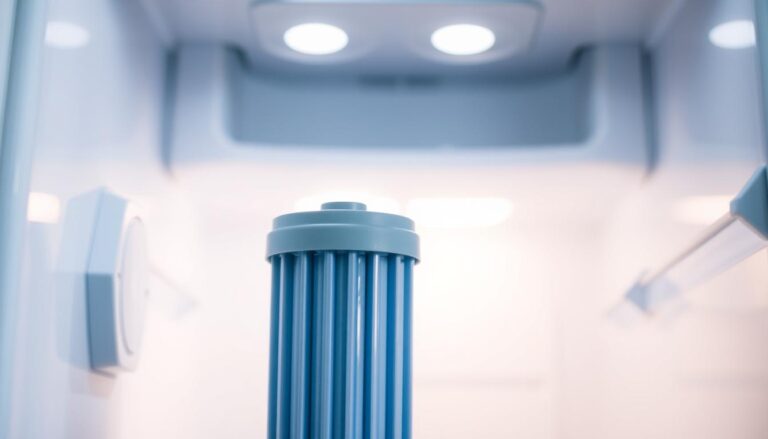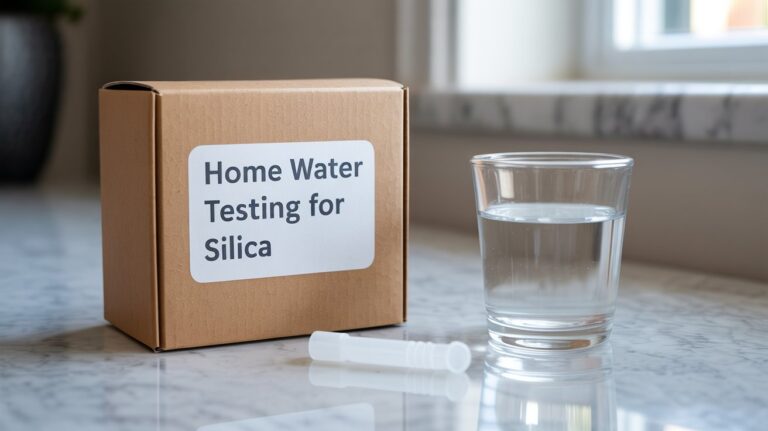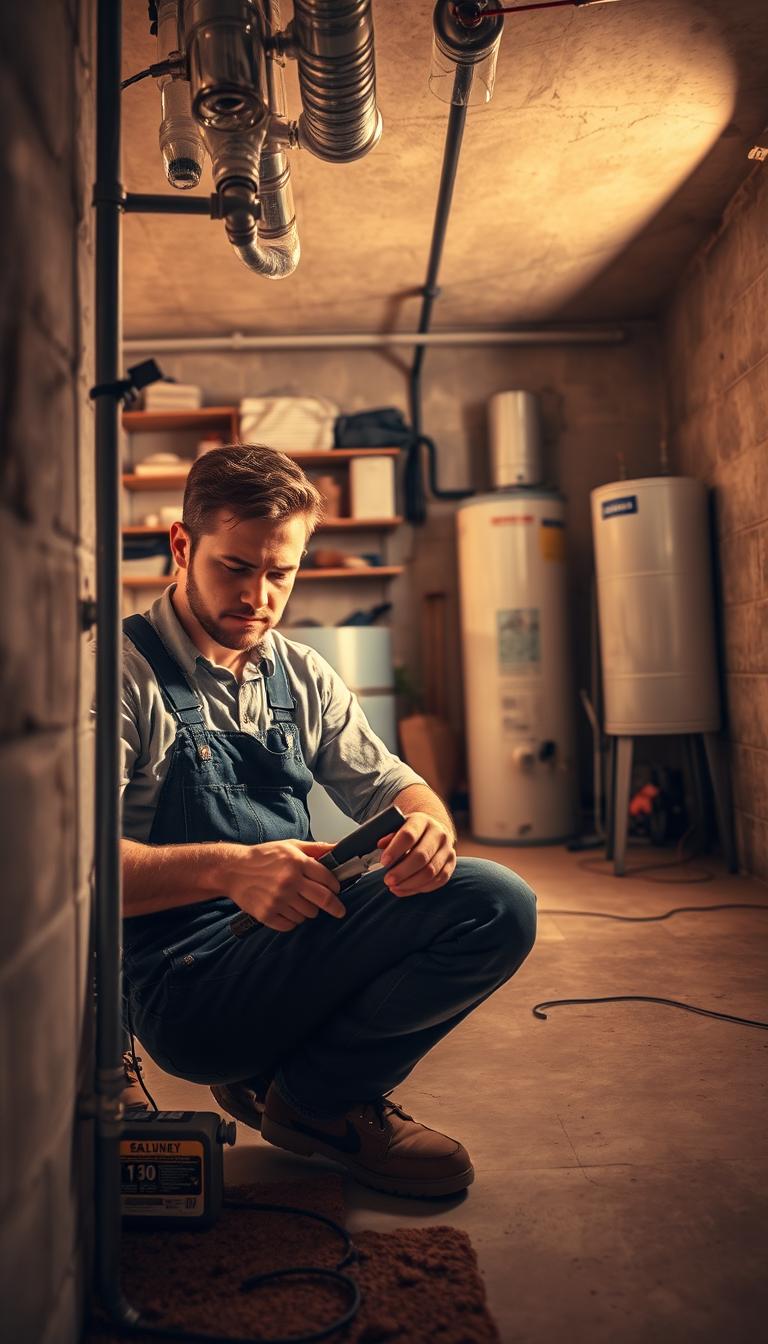Can Reverse Osmosis Water Be Used in a CPAP Machine?
Continuous Positive Airway Pressure (CPAP) machines are a crucial treatment for sleep apnea, a condition affecting millions in the United States. According to the Valley Sleep Center, using distilled, sterile, bottled, or reverse osmosis water is recommended for CPAP machines, highlighting the importance of water quality.
The quality of water used in CPAP machines is vital to prevent bacterial growth and mineral buildup, which can affect the device’s performance and user’s health. Reverse osmosis water is often considered due to its purity.
The question remains, is reverse osmosis water suitable for CPAP machines? Understanding the compatibility of reverse osmosis water with CPAP machines is essential for users to ensure the longevity of their device and their health.
Key Takeaways
- CPAP machines require high-quality water to function effectively.
- Reverse osmosis water is considered safe for use in CPAP machines.
- The purity of water is crucial to prevent bacterial growth and mineral buildup.
- Using the right type of water can extend the life of a CPAP machine.
- Users should follow manufacturer guidelines for water usage.
Understanding CPAP Therapy and Water Quality Requirements
The effectiveness of CPAP therapy is not just dependent on the machine itself, but also on the quality of water used in its humidification system. CPAP machines often come equipped with humidification systems to prevent dryness and discomfort in users. The quality of water used in these systems is crucial for preventing mineral buildup and bacterial growth, which can compromise the therapy’s effectiveness and user safety.
How CPAP Humidification Systems Work
CPAP humidification systems are designed to add moisture to the air being delivered to the user, thereby preventing dryness in the nasal passages and throat. These systems typically involve a water chamber that is filled with distilled or purified water. As the air passes through the humidifier, it picks up moisture before being delivered to the user. Proper cpap machine maintenance includes regularly cleaning and replacing parts of the humidification system to prevent bacterial growth and mineral deposits.
Why Water Quality Matters for CPAP Therapy
The quality of water used in CPAP humidification systems is vital because tap water can contain minerals and impurities that lead to scale buildup within the machine. This buildup not only affects the machine’s performance but can also harbor bacteria, potentially leading to respiratory infections. Using water with appropriate quality is essential for cpap machine care and ensuring the longevity of the device. Moreover, good water quality for cpap machine use helps in maintaining the overall health and comfort of the user during therapy.
What is Reverse Osmosis Water?
Understanding reverse osmosis water is crucial for determining its suitability in CPAP therapy. Reverse osmosis (RO) is a water purification process that uses a semipermeable membrane to remove impurities from water. This process is significant for producing water that is virtually free of dissolved solids, making it a popular choice for various applications, including use in CPAP machines.
The Reverse Osmosis Filtration Process Explained
The reverse osmosis filtration process involves forcing water through a semipermeable membrane, which has tiny pores that block impurities and allow clean water to pass through. This process effectively removes a wide range of contaminants, including dissolved salts, bacteria, and other impurities, resulting in highly purified water. The effectiveness of RO systems in removing impurities makes them a viable option for CPAP users seeking pure water for their therapy.
Key aspects of the RO filtration process include:
- Removal of dissolved solids and salts
- Elimination of bacteria and viruses
- Reduction of other impurities
Mineral Content and pH Properties of RO Water
Reverse osmosis water is characterized by its low mineral content due to the filtration process, which removes minerals along with other impurities. The pH level of RO water tends to be slightly acidic because the removal of alkaline minerals can lower the water’s pH. While this purity is beneficial for certain applications, it also raises considerations for CPAP users, as the lack of minerals and the acidity might impact the therapy.
It’s essential to consider these properties when evaluating RO water for CPAP use.
Can Reverse Osmosis Water Be Used in a CPAP Machine?
CPAP machine users often wonder if reverse osmosis water is a suitable alternative to distilled water. The answer to this question depends on various factors, including manufacturer guidelines and medical expert opinions.
Official Manufacturer Guidelines and Recommendations
Most CPAP machine manufacturers recommend using distilled water in their devices. For instance, ResMed and Philips Respironics suggest using distilled water to minimize mineral buildup and ensure optimal performance. However, some manufacturers acknowledge that reverse osmosis water can be used as an alternative. It’s essential to consult the user manual or contact the manufacturer’s customer support to determine their specific recommendations.
Key considerations when checking manufacturer guidelines:
- Check the user manual for recommended water types
- Look for specific instructions on using RO water
- Contact customer support if guidelines are unclear
Medical Expert Opinions on RO Water for CPAP Use
Medical experts generally agree that while distilled water is the gold standard for CPAP therapy, reverse osmosis water can be a viable alternative. According to Dr. Michael Grandner, a sleep specialist, “RO water is a good option for CPAP machines, as it has fewer minerals than tap water, which can help reduce scale buildup.”
However, some experts caution that RO water may be too pure and potentially acidic, which could lead to respiratory issues. Dr. Richard Schwab, a sleep medicine specialist, notes that “while RO water is not ideal, it’s better than using tap water, which can contain contaminants and minerals that can harm the CPAP machine and the user.”
The American Academy of Sleep Medicine recommends using distilled water, but acknowledges that RO water can be used if distilled water is not available.
Benefits of Using Reverse Osmosis Water in CPAP Therapy
Reverse osmosis water has emerged as a preferred choice for CPAP therapy due to its numerous benefits, including reduced mineral buildup and enhanced respiratory comfort. Using RO water in CPAP machines can significantly impact the overall user experience and equipment maintenance.

Reduction in Mineral Deposits and Scale Buildup
One of the primary advantages of using RO water in CPAP therapy is the reduction in mineral deposits and scale buildup within the machine. Since RO water is stripped of minerals, it minimizes the risk of scaling, which can clog the machine’s tubing and humidifier chamber. This results in less frequent cleaning and maintenance, ensuring that the CPAP machine operates efficiently over time.
Potential Improvements in Respiratory Comfort
RO water can also contribute to improved respiratory comfort during CPAP therapy. The absence of minerals and other contaminants in RO water reduces the risk of irritation or discomfort caused by impurities. This can be particularly beneficial for users with sensitive respiratory systems, providing a more comfortable therapy experience.
Impact on CPAP Machine Longevity
Using RO water can potentially extend the lifespan of CPAP machines by reducing the buildup of mineral deposits and scale. With fewer minerals to cause wear and tear, the machine’s components are less likely to degrade prematurely. This can lead to cost savings over time by reducing the need for repairs and replacements.
In conclusion, incorporating reverse osmosis water into CPAP therapy offers multiple benefits, from reduced maintenance and improved comfort to potentially extending the life of the CPAP equipment. As CPAP users seek to optimize their therapy, considering the quality of water used is a crucial step.
Potential Risks and Considerations
Reverse osmosis water is often used in CPAP machines due to its high purity, but its acidity and lack of minerals raise concerns. While RO water can reduce mineral deposits and scale buildup in CPAP machines, its characteristics may also have unintended consequences on respiratory health and equipment longevity.
Acidity Concerns and Respiratory Effects
The acidity of reverse osmosis water is a significant concern. RO water tends to be more acidic due to its low mineral content and potential absorption of CO2 from the air, forming carbonic acid. This acidity might irritate the respiratory tract, potentially exacerbating conditions like asthma or chronic obstructive pulmonary disease (COPD). Users should monitor their respiratory comfort and consult their healthcare provider if they experience any adverse effects.
- Potential irritation of the respiratory tract
- Possible exacerbation of respiratory conditions like asthma or COPD
- Importance of monitoring respiratory comfort
Remineralization Considerations for CPAP Use
To mitigate the acidity and lack of minerals in RO water, some users consider remineralization. Remineralization involves adding minerals back into the water to make it less acidic and more akin to natural water. This process can potentially improve the comfort and safety of using RO water in CPAP machines. However, it’s crucial to use a remineralization method that is compatible with CPAP therapy and doesn’t introduce contaminants or bacteria into the system.
- Using a remineralization filter designed for CPAP use
- Regularly checking and maintaining the remineralization system
- Consulting with a healthcare professional for recommendations
Comparing CPAP Water Options: Distilled vs. Reverse Osmosis vs. Tap
When it comes to CPAP therapy, the type of water used in the humidifier is crucial for effective treatment and machine longevity. The choice of water can impact not only the performance of the CPAP machine but also the user’s respiratory comfort.
There are several types of water that can be used in CPAP machines, including distilled water, reverse osmosis (RO) water, and tap water. Each has its own set of characteristics that make it more or less suitable for CPAP use.
Distilled Water: The Gold Standard for CPAP
Distilled water is considered the gold standard for CPAP machines because of its high purity level. The distillation process removes nearly all impurities, minerals, and bacteria, making it an ideal choice for CPAP humidifiers. Using distilled water can help prevent mineral buildup in the machine and reduce the risk of respiratory issues.
Reverse Osmosis Water: A Viable Alternative?
Reverse osmosis water is another option for CPAP users. RO systems remove a wide range of contaminants and minerals from the water, resulting in a very pure product. While not as pure as distilled water, RO water can be a viable alternative if properly maintained. It’s essential to regularly check the RO system’s performance to ensure it continues to produce high-quality water.
Why Tap Water and Bottled Water Are Generally Discouraged
Tap water and bottled water are generally not recommended for CPAP machines due to their potential for containing minerals, bacteria, and other contaminants. These impurities can lead to scale buildup in the machine and potentially cause respiratory issues. Tap water, in particular, can vary significantly in quality depending on the source and treatment process.
To summarize the key differences between these water types, consider the following comparison:
| Water Type | Purity Level | Mineral Content | Suitability for CPAP |
|---|---|---|---|
| Distilled Water | Very High | Very Low | Excellent |
| Reverse Osmosis Water | High | Low | Good |
| Tap Water | Variable | Variable | Poor |
| Bottled Water | Variable | Variable | Poor |
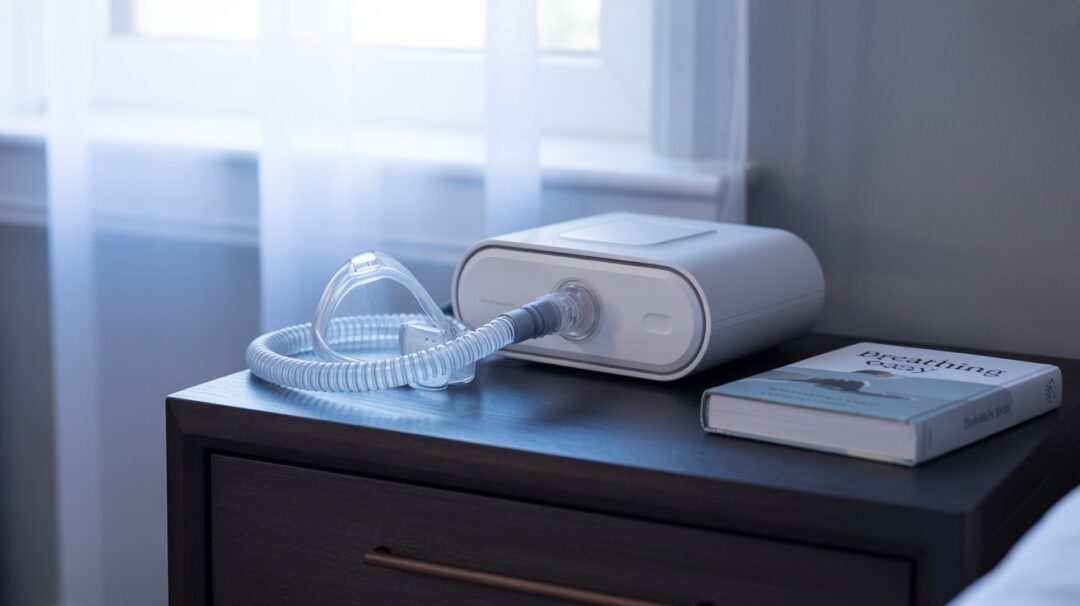
Ultimately, the best water for a CPAP machine is one that is pure and free from contaminants. While distilled water remains the gold standard, reverse osmosis water can be a suitable alternative if properly maintained.
Setting Up and Maintaining a Reverse Osmosis System for CPAP Use
To ensure optimal CPAP performance, it’s crucial to understand how to properly set up and maintain a reverse osmosis water filtration system. This involves selecting the right equipment and following a regular maintenance schedule to guarantee the water produced is safe and effective for CPAP therapy.
Home RO System Options and Installation Basics
When choosing an RO system for CPAP use, consider the following factors: filtration stages, flow rate, and maintenance requirements. A typical under-sink RO system can be a good option, as it provides multiple stages of filtration and can be installed relatively easily.
Key considerations for RO system installation:
- Ensure proper connection to a dedicated faucet
- Follow manufacturer’s instructions for installation
- Check for any necessary additional components (e.g., remineralization filters)
Ongoing Maintenance Requirements for Water Quality
Regular maintenance is vital to ensure the RO system continues to produce high-quality water for CPAP use. This includes replacing filters as recommended by the manufacturer, sanitizing the system periodically, and checking for any signs of leakage or malfunction.
| Maintenance Task | Frequency | Importance |
|---|---|---|
| Replace pre-filters | Every 6-12 months | High |
| Replace RO membrane | Every 2-3 years | Critical |
| Sanitize the system | Every 6-12 months | High |
By following these guidelines for setting up and maintaining an RO system, CPAP users can ensure they are using high-quality water for their therapy, potentially improving the effectiveness and longevity of their CPAP machine.
Real User Experiences: Using Reverse Osmosis Water in CPAP Machines
Users of CPAP machines have reported diverse experiences with using reverse osmosis water, highlighting both benefits and challenges. As more individuals turn to RO water for their CPAP therapy, understanding these real-world outcomes becomes increasingly valuable.
Success Stories and Positive Outcomes
Many users have praised the use of reverse osmosis water in their CPAP machines, citing reduced maintenance needs and improved comfort during therapy. By using RO water, these users have noticed a decrease in mineral deposits and scale buildup within their machines, potentially extending the lifespan of their equipment.
Challenges and Solutions Reported by CPAP Users
While many have benefited from using RO water, some users have encountered challenges, such as concerns regarding the acidity of the water and its potential impact on respiratory health. To address these issues, some users have opted for remineralization of their RO water, adding back beneficial minerals that may have been removed during the filtration process.
By sharing these experiences, CPAP users can make more informed decisions about their therapy, balancing the benefits of reverse osmosis water with potential drawbacks and exploring solutions to mitigate any challenges encountered.
Best Practices for CPAP Water Management
To ensure optimal CPAP therapy, it’s essential to follow best practices for water management. Effective management of water quality is crucial for both the longevity of the CPAP machine and the health of the user. This involves several key practices that help maintain the purity of the water and prevent any potential issues with the therapy.
Proper Storage and Handling of Water for CPAP Use
Proper storage and handling of water are critical to maintaining its quality. Always use distilled or reverse osmosis water, as recommended by most CPAP manufacturers. Store water in a clean, covered container to prevent contamination. It’s also important to change the water daily to prevent bacterial growth.
Preventing Contamination and Bacterial Growth
Preventing contamination is vital for the health and safety of CPAP users. Regularly cleaning the humidifier chamber and tubing can help prevent bacterial growth. Use a mixture of white vinegar and water to clean these components, and ensure they are thoroughly rinsed and dried before reuse.
Water Temperature Considerations for Optimal Therapy
The temperature of the water in the humidifier can significantly impact the effectiveness of CPAP therapy. Most modern CPAP machines allow for adjustable humidifier settings. It’s recommended to maintain a comfortable temperature that prevents dryness without causing condensation in the mask or tubing.
By following these best practices for CPAP water management, users can enhance their therapy experience, ensuring it remains effective and comfortable. Regular maintenance and attention to water quality are simple yet effective ways to improve overall sleep quality.
Troubleshooting CPAP Issues Related to Water Quality
Effective CPAP therapy relies on proper water quality, and troubleshooting common issues can significantly enhance user experience. Water quality plays a crucial role in maintaining the hygiene and functionality of CPAP machines. Issues related to water quality can affect CPAP machine performance and user health, making it essential to identify and address these problems promptly.
Identifying Problems Caused by Water Type
The type of water used in a CPAP machine can lead to various issues. For instance, using tap water can result in mineral deposits and scale buildup, potentially clogging the machine’s humidifier and tubing. On the other hand, using water that is too pure, such as reverse osmosis water, might lead to acidity concerns. It’s crucial to monitor the machine’s performance and user comfort to identify any water-related issues.
| Water Type | Potential Issues | Impact on CPAP Machine |
|---|---|---|
| Tap Water | Mineral deposits, scale buildup | Clogging of humidifier and tubing |
| Reverse Osmosis Water | Acidity concerns | Potential corrosion, user discomfort |
| Distilled Water | None significant | Optimal performance, minimal maintenance |
When to Consult Your Sleep Specialist About Water Concerns
If you notice any unusual symptoms or machine malfunctions that you suspect are related to water quality, it’s essential to consult your sleep specialist. Common signs that warrant professional advice include persistent congestion, dry mouth, or if the CPAP machine is making unusual noises. Your sleep specialist can provide guidance on adjusting your water usage or recommend alternative water types to resolve the issues.
Regular maintenance and proper water management are key to ensuring the longevity of your CPAP machine and the effectiveness of your therapy. By being proactive and addressing water-related issues promptly, you can enjoy a more comfortable and restful sleep.
Conclusion
Determining the best water for a CPAP machine is crucial for effective therapy. This article has explored the suitability of reverse osmosis (RO) water for CPAP use, weighing its benefits and potential drawbacks.
RO water can be a viable option for CPAP machines due to its purity and reduced mineral content, which may minimize scale buildup and improve the longevity of the device. However, considerations such as the potential acidity of RO water and the need for remineralization must be taken into account.
When deciding on the best water for a CPAP machine, users should consider their specific needs and the recommendations of their healthcare provider or the device manufacturer. Proper water management, including storage, handling, and maintenance, is also essential for optimal CPAP therapy.
In conclusion, while RO water can be used in a CPAP machine under certain conditions, it is essential to follow best practices for water management to ensure the effectiveness and longevity of the device. By choosing the right water source, such as RO water, and maintaining proper care, CPAP users can optimize their therapy and improve their overall sleep quality.

